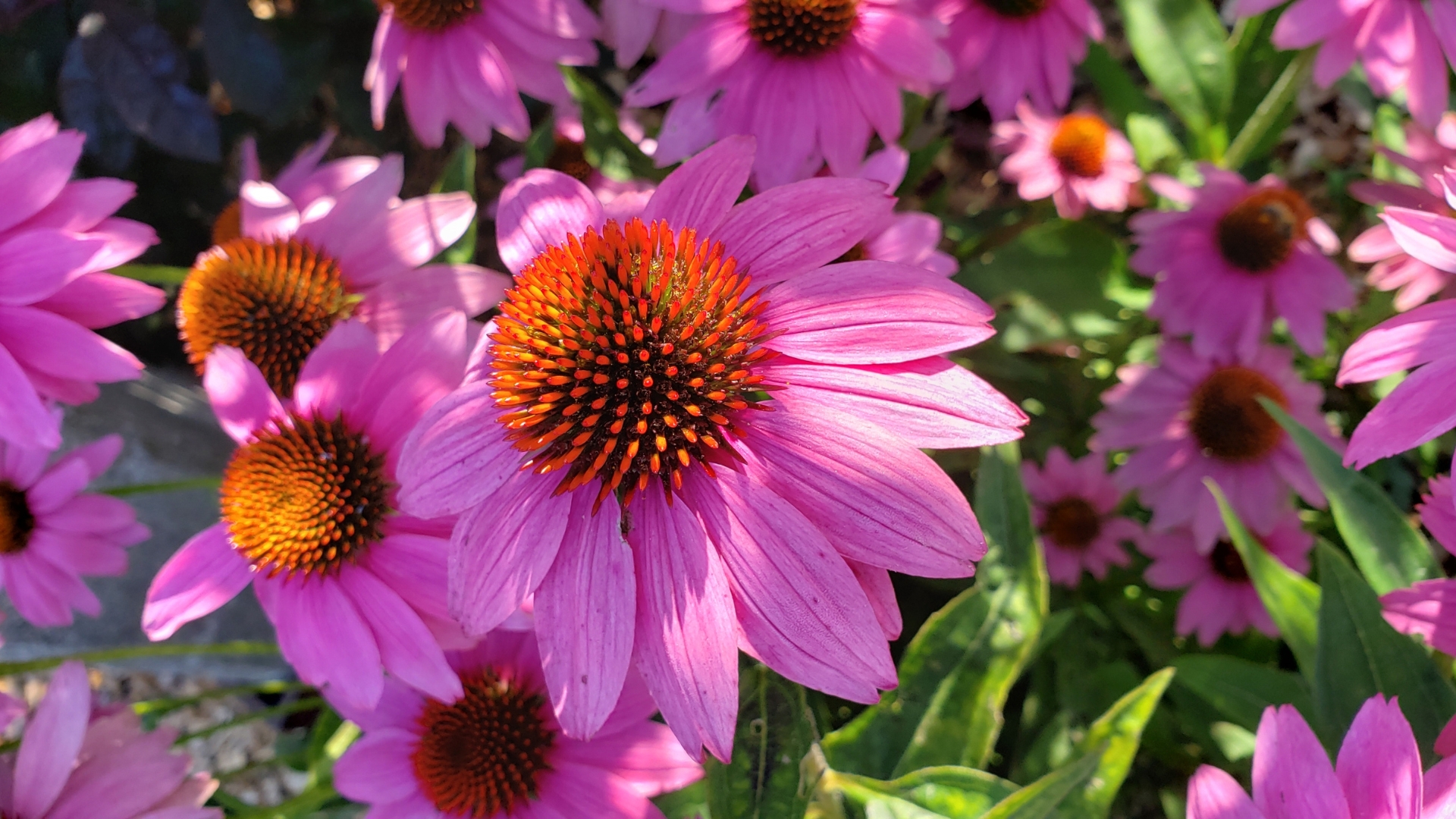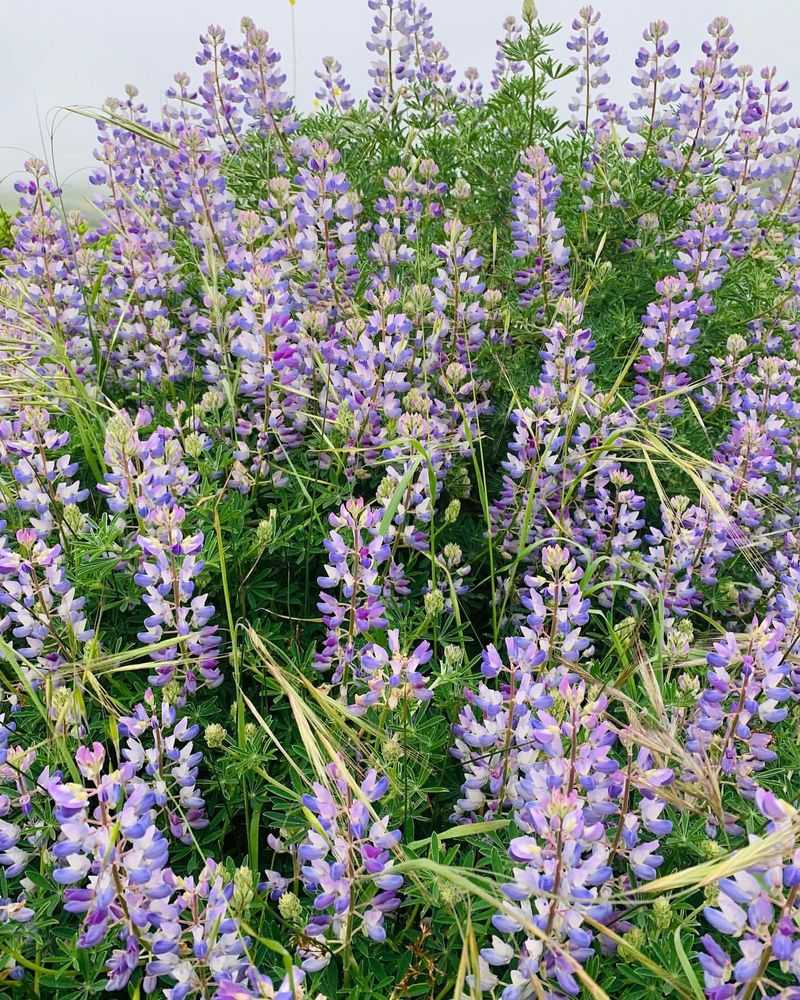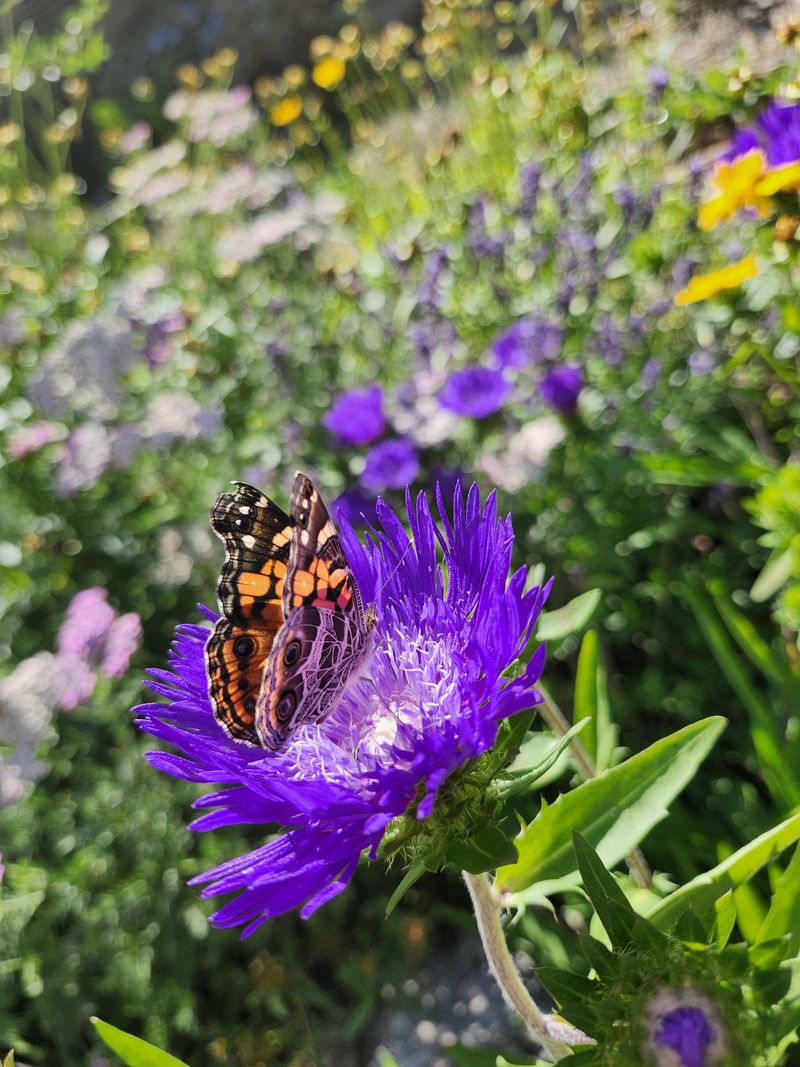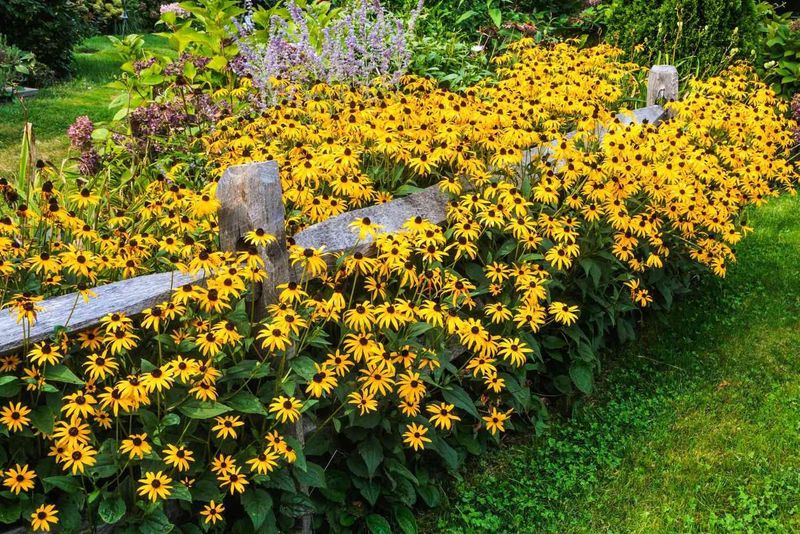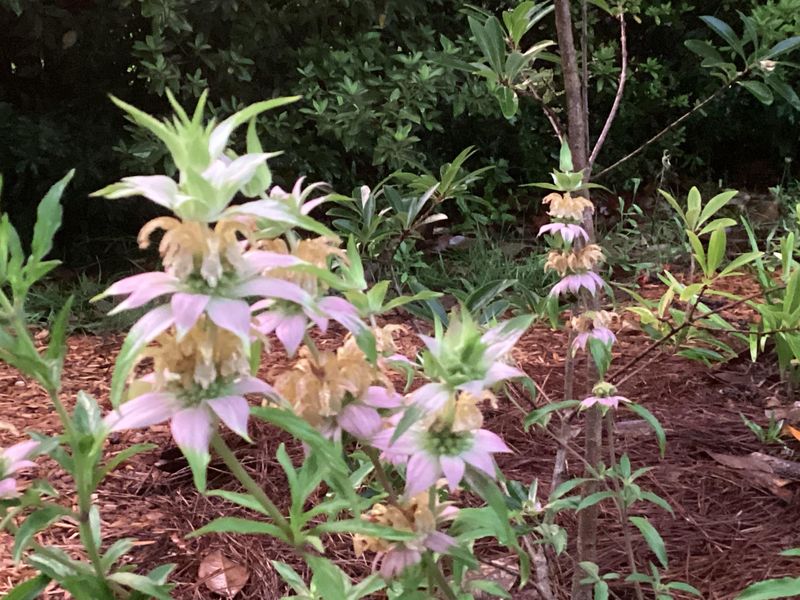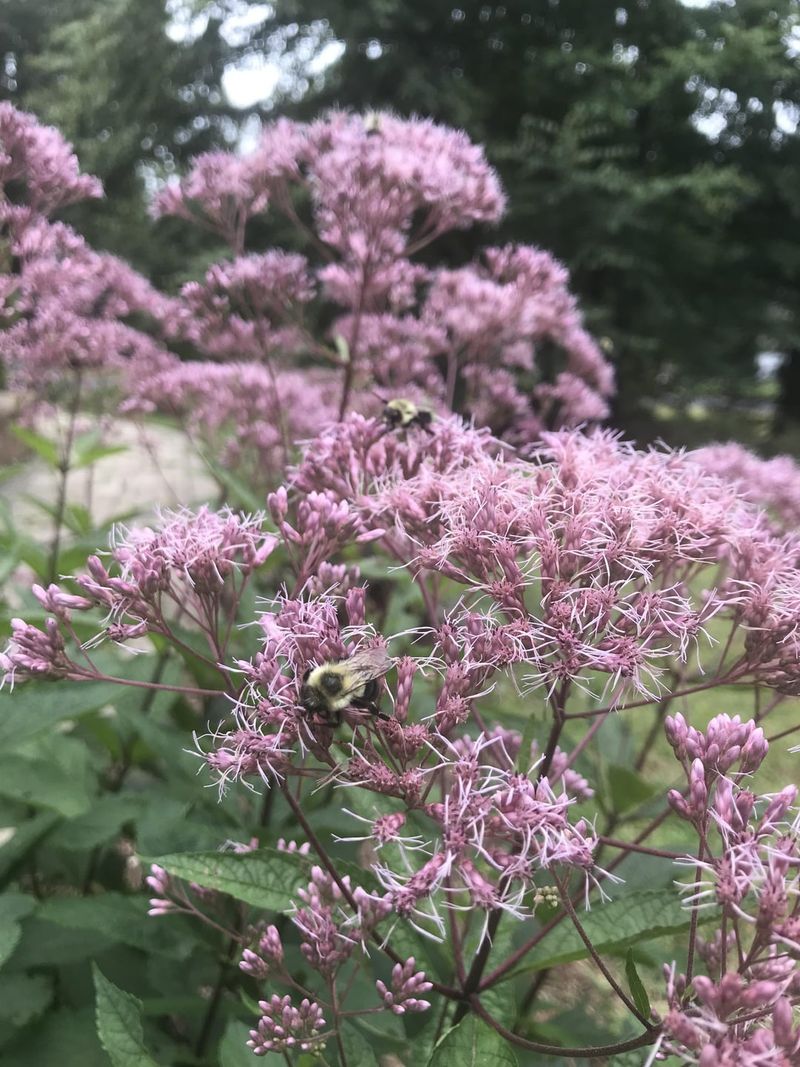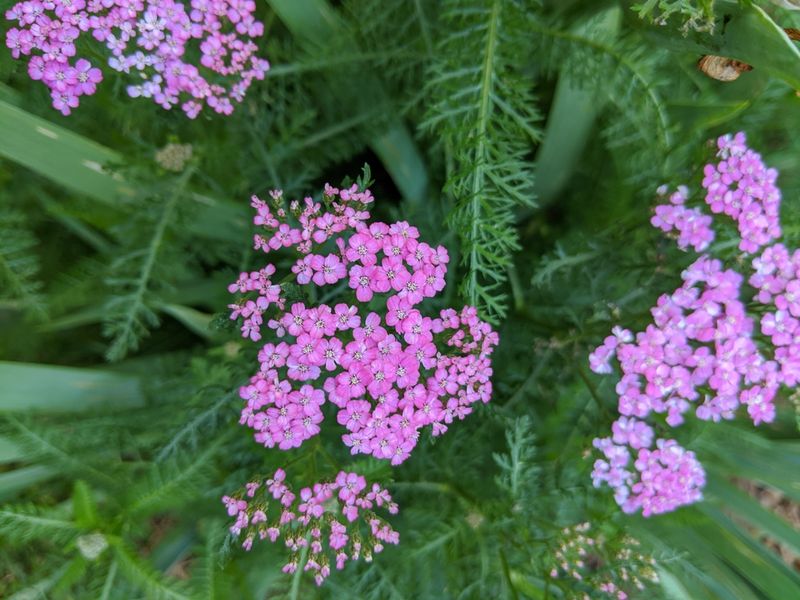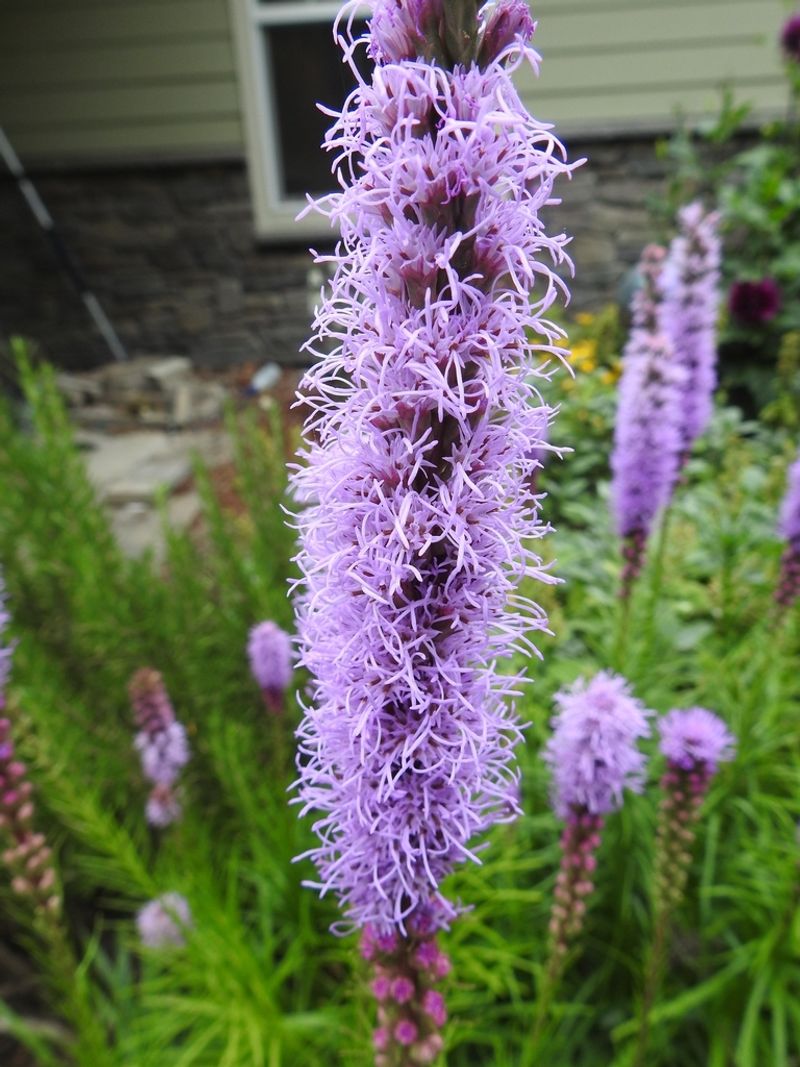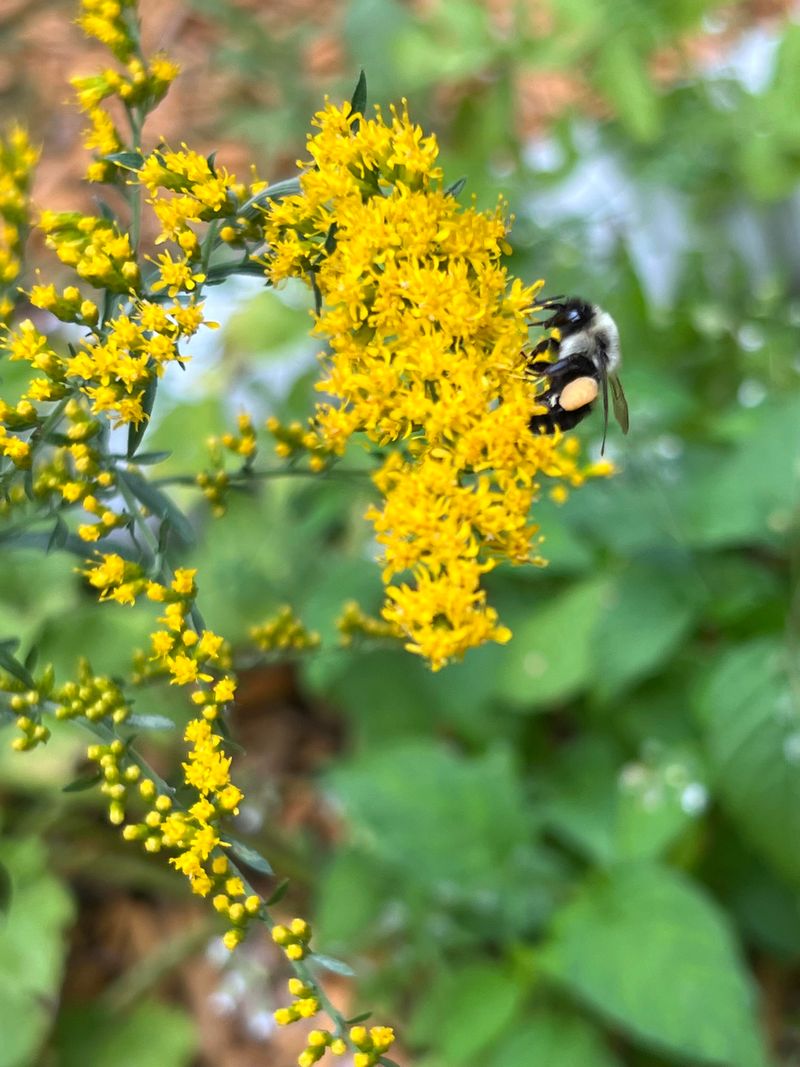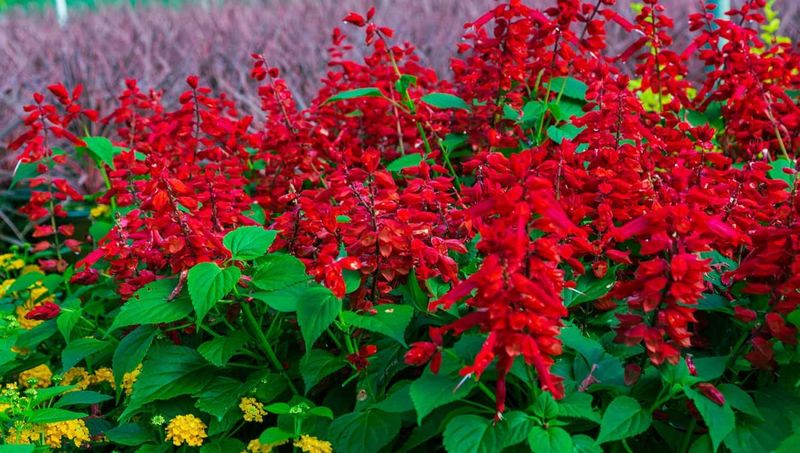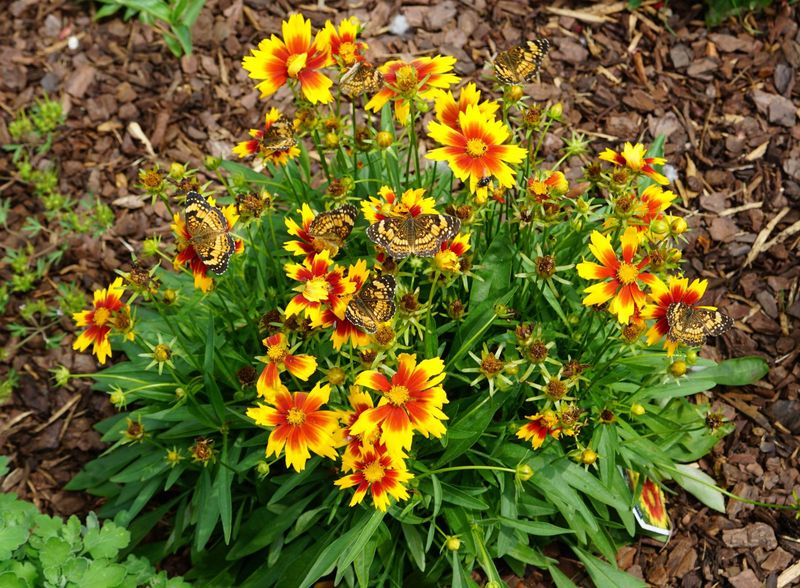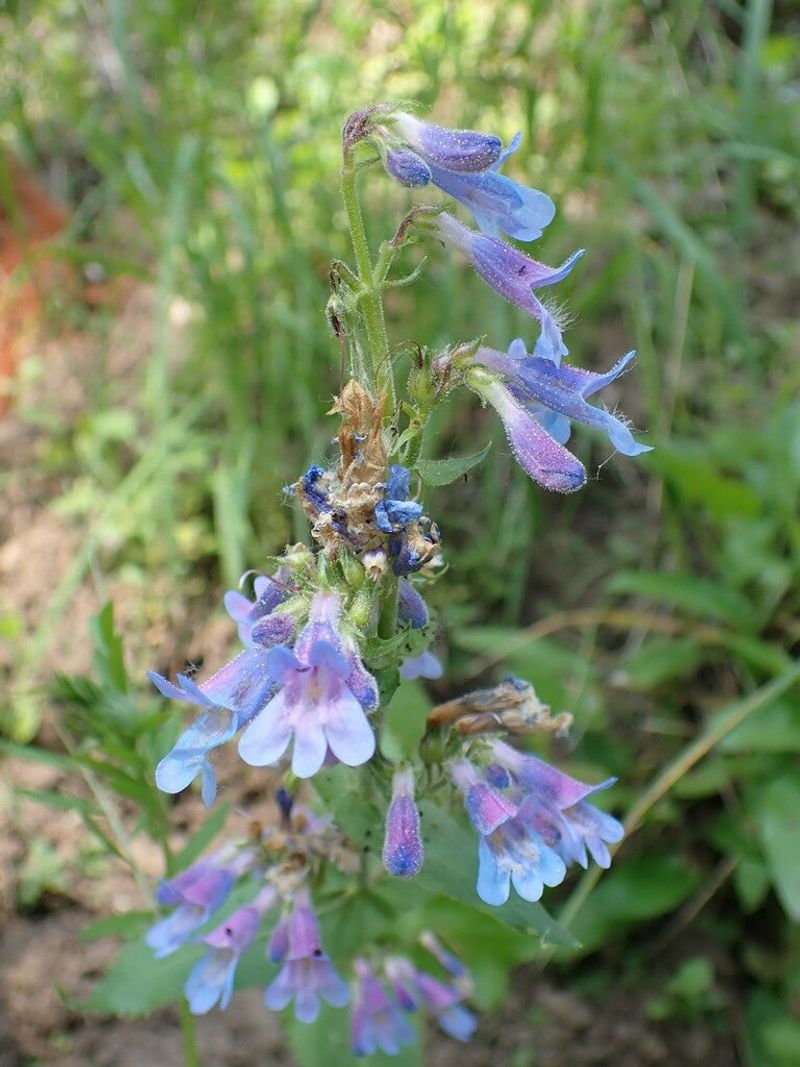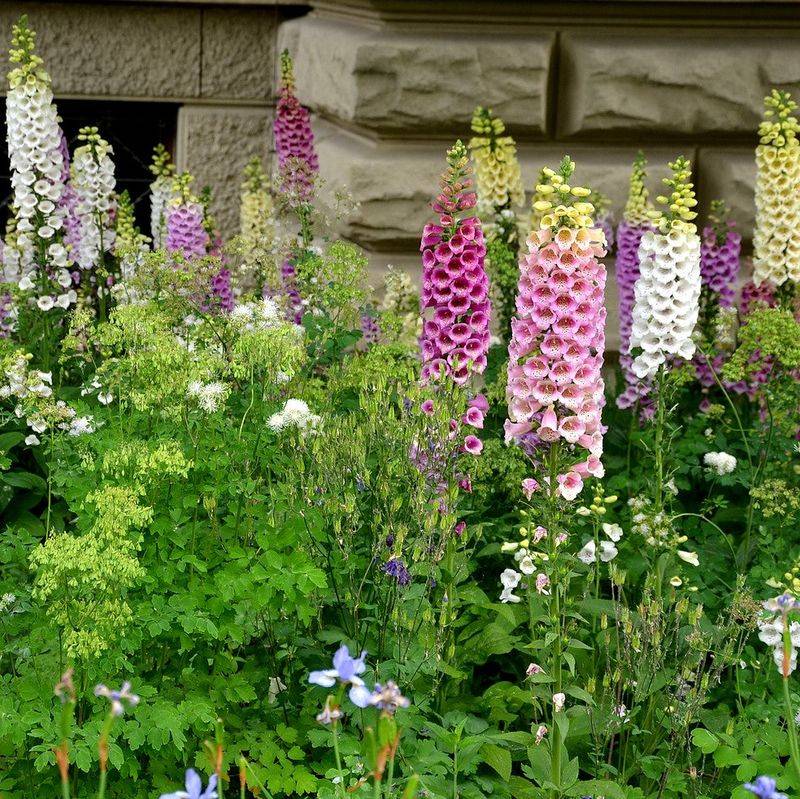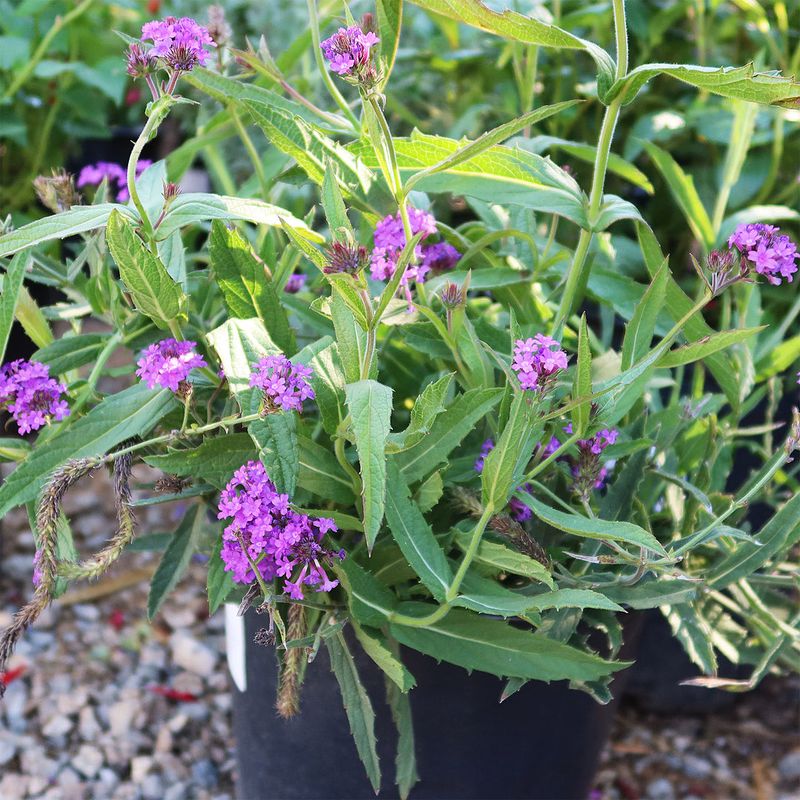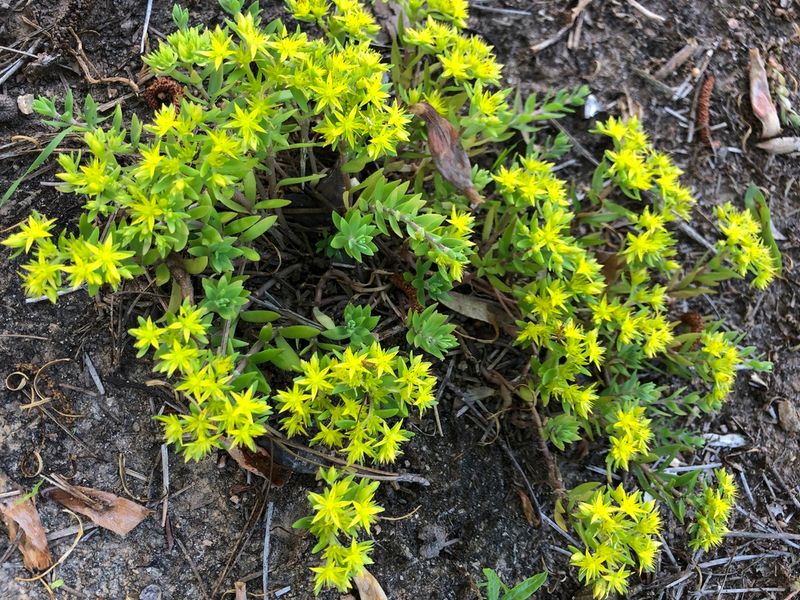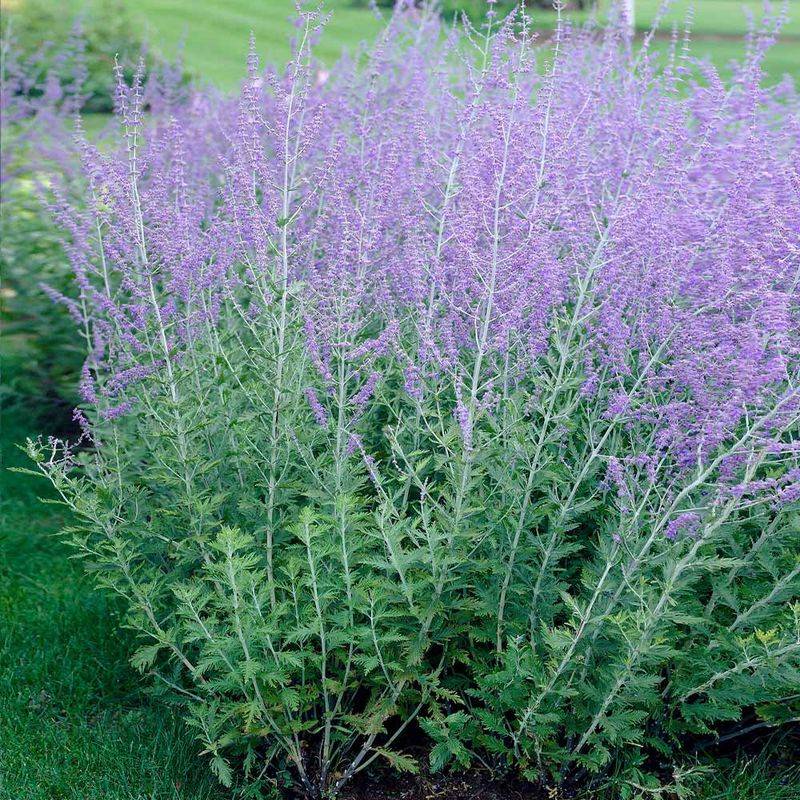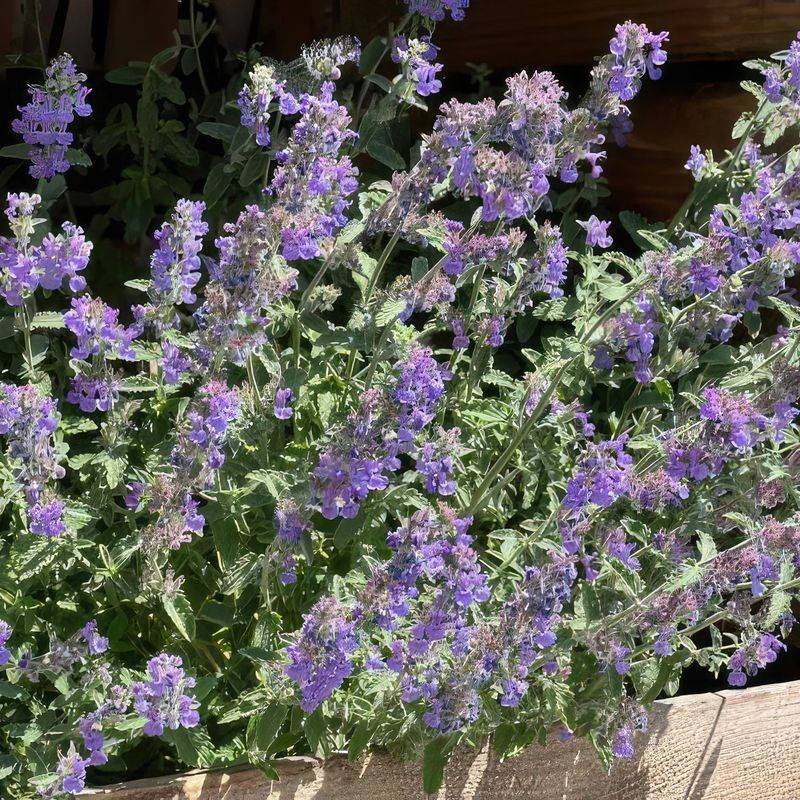Creating a wildlife garden is a delightful way to support local fauna while enjoying the natural beauty of perennial plants. These gardens provide essential food, shelter, and nesting sites for various creatures, enhancing biodiversity in your area.
By selecting a range of perennials that bloom at different times, you can ensure a year-round supply of nourishment and sanctuary for wildlife. Join us as we explore 20 captivating perennials that will make your garden a haven for critters of all kinds!
1. Lavender
Picture a garden alive with fluttering wings. Lavender, with its aromatic purple blooms, draws bees and butterflies in droves. This perennial not only offers a feast for pollinators but also fills the air with its calming scent. With its hardy nature, it thrives in sunny spots and well-drained soil.
Plant it near garden paths to brush against its soothing fragrance, and watch as your wildlife guests delight in its abundant nectar.
2. Coneflower
In the heart of summer, coneflower stands tall with its striking, daisy-like flowers. The coneflower, or Echinacea, attracts butterflies and bees, making it a garden favorite. Its vibrant pink and purple petals provide a splash of color while offering vital sustenance to insects.
Thriving in full sun, this resilient plant is drought-tolerant and easy to grow. Coneflower seeds are a treat for birds, especially goldfinches, in the fall, creating a year-round habitat for wildlife.
3. Milkweed
Imagine a meadow teeming with monarch butterflies. Milkweed, the vital host plant for monarchs, is a key player in wildlife gardens. Its clusters of pink or orange flowers provide nectar for various pollinators.
Not only does milkweed support butterfly reproduction, but its leaves also nourish hungry caterpillars. Planting milkweed helps support the monarch population and adds a touch of whimsy to your garden.
4. Black-eyed Susan
Golden petals with dark centers dance in the breeze. Black-eyed Susan is more than just a pretty face; it’s a favorite among bees and butterflies. This cheerful perennial blooms from midsummer to fall, providing a long-lasting food source.
Resistant to pests and diseases, it thrives in a variety of soil types. Its seeds are a winter snack for birds, ensuring your garden buzzes with life year-round.
5. Bee Balm
Step into a garden humming with activity. Bee Balm, with its red tubular flowers, is a magnet for hummingbirds and bees.
This perennial brings vibrant color and a spicy aroma to the garden. Preferring sunny locations, it’s perfect for borders and wildflower gardens. Its long bloom period ensures continuous nourishment for pollinators, making it a must-have for wildlife enthusiasts.
6. Joe Pye Weed
Tall and graceful, Joe Pye Weed adds elegance to any garden. With clusters of pinkish-purple flowers, it’s a butterfly magnet. Known for its towering height, this perennial thrives in moist soils and can be a centerpiece in wildlife gardens.
Its late-summer blooms ensure a nectar source when others fade. As the flowers turn to seed, they provide a feast for birds, creating a lively ecosystem.
7. Yarrow
A meadow gem that captivates with its feathery foliage and flat-topped clusters. Yarrow is beloved by bees and beneficial insects. This hardy perennial comes in various colors, including white, yellow, and pink.
It thrives in poor soil and requires minimal care, making it a gardener’s friend. Yarrow’s long blooming season offers a consistent food source, and its dried flowers can be used in arrangements.
8. Aster
Autumn’s answer to the fading summer blooms. Asters, with their star-shaped flowers, beckon bees and butterflies. These perennials come in shades of purple, blue, and white, adding color to fall gardens.
They’re perfect for borders and thrive in well-drained soil. Asters extend the feeding season for pollinators and create a picturesque scene in the waning days of the year.
9. Liatris
Vertical spikes of purple flowers reaching for the sky. Liatris, or blazing star, is a striking addition to any garden. Butterflies and bees flock to its blooms, ensuring a lively display. It’s drought-tolerant and thrives in sunny, well-drained areas.
With its unique texture, liatris adds interest to flower borders and wildflower gardens, supporting pollinators with every spike.
10. Goldenrod
Fields of gold that sway with the wind. Goldenrod is often mistaken for causing allergies, but it’s actually a pollinator powerhouse. Its bright yellow flowers attract a host of beneficial insects, from bees to butterflies.
This perennial thrives in poor soil and full sun, making it a resilient garden choice. Goldenrod’s late blooms provide essential nectar when other flowers have gone dormant.
11. Salvia
A sea of color that dances in the breeze. Salvia, with its blue and purple spikes, is a favorite of bees and hummingbirds.
This drought-tolerant perennial thrives in sunny spots and well-drained soil. Its flowers bloom from summer to fall, offering continuous nourishment to pollinators. Salvia’s aromatic foliage adds another layer of sensory delight to wildlife gardens.
12. Coreopsis
Bright as sunshine, coreopsis brings cheer to any garden. Known for its yellow, daisy-like flowers, this perennial is a magnet for butterflies and bees. It’s easy to grow and thrives in a range of conditions, from dry to moderately moist soils.
Coreopsis’ long blooming season provides a steady food source for pollinators. Its seeds also attract birds, adding another dimension of wildlife support.
13. Penstemon
A splash of color in rocky terrains. Penstemon, with its tubular pink flowers, attracts hummingbirds and bees alike.
This perennial thrives in well-drained soil and is perfect for rock gardens. Its long blooming season ensures pollinators have a consistent food source. Penstemon’s striking form and vibrant colors make it a standout in any wildlife garden.
14. Foxglove
Enchanted woodlands where bees buzz happily. Foxglove, with its towering purple spikes, is a sight to behold. This perennial thrives in partial shade, making it perfect for woodland gardens.
Its tubular flowers provide nectar for bees and hummingbirds. While beautiful, foxglove is toxic if ingested, so plant it with care and enjoy its charm from afar.
15. Verbena
A cloud of purple that dances in the sun. Verbena, with its small clustered flowers, attracts butterflies and bees. This perennial thrives in full sun and well-drained soil. It’s drought-tolerant, making it a low-maintenance choice for gardens.
Verbena’s long blooming period ensures a steady food supply for pollinators and adds a splash of color to any landscape.
16. Sedum
Rocky landscapes transformed by pink blooms. Sedum, with its succulent leaves and starry flowers, is a favorite of bees. This perennial thrives in poor soil and requires minimal water, making it ideal for rock gardens.
Its late-summer blooms provide nectar when few other flowers are available. Sedum’s unique texture adds visual interest and supports pollinators effortlessly.
17. Phlox
A sea of pink and white that delights the senses. Phlox, with its fragrant flowers, is a butterfly magnet. This perennial thrives in sunny borders and woodland edges, offering a splash of color.
Its long blooming season ensures pollinators have a feast throughout the summer. Phlox’s sweet aroma and vivid hues make it a garden favorite for both wildlife and humans.
18. Russian Sage
Silvery leaves and lavender-blue flowers sway gracefully in the breeze. Russian Sage is a favorite among bees and butterflies.
This drought-tolerant perennial thrives in sunny, well-drained locations. Its aromatic foliage and long bloom period make it a valuable addition to wildlife gardens. Russian Sage not only supports pollinators but also adds a touch of elegance to any landscape.
19. Bergamot
Scarlet blooms that light up the garden. Bergamot, or Monarda, with its fiery red flowers, is a pollinator’s delight. This perennial thrives in sunny spots and moist soils.
Its striking blooms provide nectar for bees, butterflies, and hummingbirds. Bergamot’s aromatic leaves can also be used in teas, adding versatility to its garden allure.
20. Catmint
A cascade of lavender-blue that spills over garden borders. Catmint, with its aromatic foliage, attracts bees and butterflies.
This perennial thrives in sunny, well-drained areas and is drought-tolerant. Its long flowering season provides a continuous nectar supply. Catmint’s soft colors and pleasant scent make it a charming addition to any wildlife garden.

